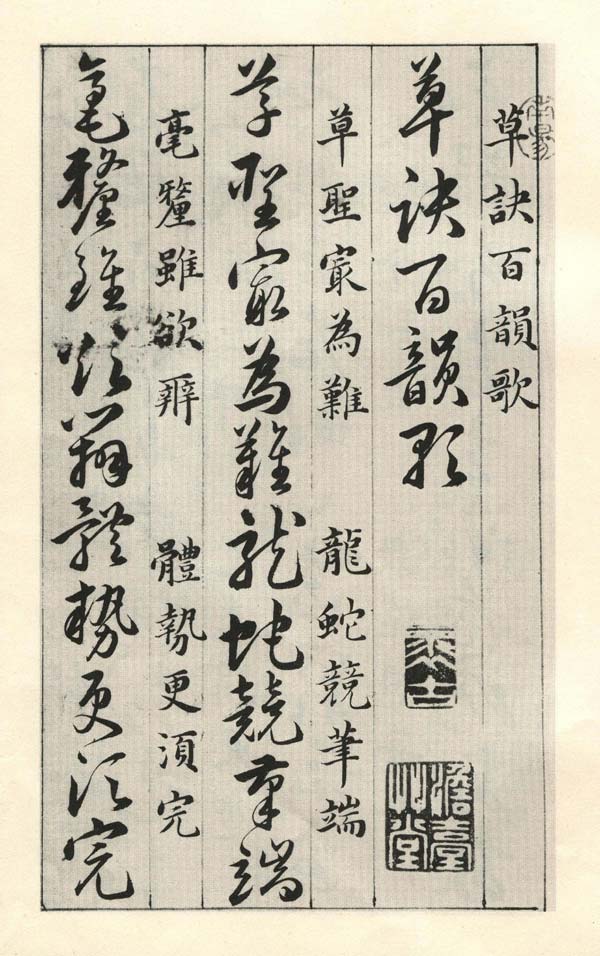Han Daoheng's birth and death are unknown, and his courtesy name is Yingquan. Gong calligraphy. A talented man from the south of the Yangtze River in the late Ming Dynasty. He was good at poetry and calligraphy, and mainly wrote calligraphy. He learned from the two kings. The main activities took place during the Wanli period. In the 41st year of Wanli reign (1613), Li Bai tasted the book "The Road to Shu", and Zhang Jundu added pictures. "Caojue Baiyunge" written in the 41st year of Wanli (AD 1613) is an important work by Han Daoheng. He wrote the main radicals, their usage and the differences between them in a five-character rhyme, which clearly explained certain rules in the structure and writing of cursive characters. He also used block letters for comparison, making it easier to remember. . This "Cao Jue Hundred Rhymes" was recited for a while and was widely circulated as a model for cursive calligraphy.

Han Daoheng's "Cursive Script of Li Bai"
"Li Bai's Wenzhou in Cursive Script" is a masterpiece of Han Daoheng.

Han Daoheng's "Cao Jue Hundred Rhymes"








